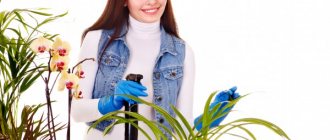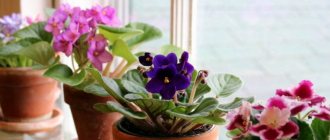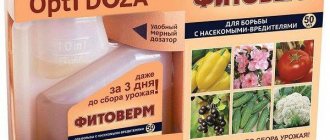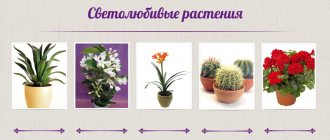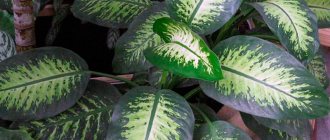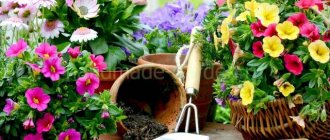Plants for a children's room: possible
Indoor plants that can be placed in a children's room:
- Plants that the child likes and are pleasing to his eyes.
- Plants with healing properties ( rose, rosemary, geranium ).
- Plants that are natural air filters ( chlorophytum, asparagus, begonia, etc.)
Below I will give descriptions of the most popular indoor plants for a children's room:
- Sansevieria
- Chlorophytum
- Kalanchoe
- Tradescantia
- Violet
- Fittonia
- Begonia
- Spathiphyllum
- Anthurium
- Maranta
- Dracaena
- Decembrist
- Cyperus
- Hibiscus
- Cyclamen
- Crassula
- Pelargonium
- Balsam
- Fern
- Gardenia
- Hippeastrum
- Orange/lemon tree
- Calla
- Cypress
- Peperomia
Tips for parents
- “Introduce” your baby to the plant. Give it a name, tell it a little about the plant, explain that it is alive and needs to be handled with care. Tell us how to water and spray so that the child can do it himself.
- A calm atmosphere and pleasant music contribute to better and faster plant growth.
- Plant plants in bright and unusual pots. Your baby's urge to garden and explore the world around him will be stronger. He will be interested in caring for plants that grow in brightly colored pots, in the shape of animals or favorite cartoon characters.
- You can paint ordinary pots yourself. Draw your favorite animals or heroes on them.
- Old toys, for example, the body of a car, can also serve as pots.
- Children also really like compositions made from several types of plants. For example, a florarium with succulents, without thorns .
- If children are still small, do not place pots on the floor, as they may begin to take the soil out of the pot, scatter it on the floor or put it in their mouth.
- Place the plants where there is light and no drafts so that the beneficial essential oils they release do not erode, but reach your baby.
Photo: teach your child to care for plants
Energy influence and superstitions
A description of indoor violets will be incomplete without mentioning their energy component. Violets are very sensitive not only to drafts from the window, but also to bad energy in the house.
In homes where there is a lot of arguing and family members suffer from mood swings and depression, violets usually bloom poorly and tend to disappear.
Attention! The zodiac sign that violet corresponds to is Taurus. Like this sign, Saintpaulias symbolize harmony, stability and tranquility.
Violet brings peace and harmony to the house, cleanses the space of negativity . By bringing wealth into the home, it improves health and extends life expectancy.
The energy of plants depends partly on their color:
- white - purity, femininity, peace, tranquility, liberation from oppression.
This color is suitable for calming, both for people in a state of aggression and for those who are emotionally very sensitive. Dulling the feeling of anger, worries and fears, communication with a white violet brings peace. It is recommended to place white violets in rooms where children live, especially if quarrels often arise between them; - red of all shades - cleanse the house of negative energy, treat depression, and help pessimists. A person who has a violet of these colors in his house begins to have a more positive attitude towards his life;
- blue and blue - personify the unification of the earthly and airy, awakens creative abilities. They are often placed in the rooms of children who are trying to teach art - music, singing, drawing. Blue color also reduces appetite, and it is useful to place them in the kitchen if you want to lose weight;
- purple - helps mutual understanding, comprehension of the spiritual, wise, as well as for meditation and reading the future. They are hosted by teachers, writers, psychologists, philosophers and thinkers.
Requirements for colors
When choosing flowers for kindergarten, it is important to be careful and focus on children's age. In view of this, the main characteristics of plants are:
- Flowers for kindergarten must be harmless!
Unpretentiousness - they should not be too capricious and demanding, so that both the staff and the children themselves can care for them. It is important that the flower can recover quickly, because kids can accidentally damage it; - Safety - all plants in the garden must be non-poisonous and absolutely safe: without thorns, thorns, or berries. After all, children want to touch and try everything. Since some babies are prone to allergies, flowers should not emit a strong aroma or collect a lot of dust on their leaves;
- Air purification - it is better to give preference to those types that benefit health, namely, they clean the air of dust, bacteria, toxins, and enrich it with oxygen;
- Placement - it is important to arrange flowers indoors in such a way that the level of natural light in the room is not reduced.
Those species and varieties that have clearly defined parts - stems, leaves, flowers - are better suited. This will help children study the structure of green friends.
Caring for Tradescantia Reo
Rheo or Tradescantia spathacea, formerly : Rhoeo discolor
It has lanceolate leaves up to 30 cm long and 5-7 cm wide with green upper side and red lower side. The leaves grow in a sparse rosette.
Look at the photo - the Vittata variety of this type of indoor Tradescantia has yellow longitudinal stripes on the leaves, which turn pink in very intense light:
- Family: Commelinaceae (Commelinaceae).
- Homeland: Tropical Central America.
- Location: Light, fades in a dark place. Protect from the sun.
- Temperature: Room temperature, not lower than 18 °C. Keep roots warm.
- Air humidity: 50%, provide artificially.
- Substrate: Flower soil mixture.
- Watering: When growing this Tradescantia, you only need to maintain moisture and avoid stagnant waterlogging.
- Feeding: Every week in summer, once every 4 weeks in winter.
- Replanting: Every year.
- Reproduction: By side shoots, seeds.
- Pests, diseases: Rare.
Important! The drainage of the pot should be good. The plant does not tolerate waterlogging. For hydroponics use warm water!
Life cycles
When buying a little baby, you always wonder how long such flowers grow. Violets grow quite quickly, from a small baby to an adult blooming violet in just six months to a year, depending on the variety.
It takes no more than a year from cutting to adult plant.
Violets are propagated by leaves, shoots and peduncles. Children from stepchildren bloom the fastest, and later than all from peduncles.
The stages of violet growth can be divided:
- A cutting from a leaf or peduncle (leaves are taken from the second or third row and rooted in a convenient way);
- A baby from a cutting or a stepson (children are separated from the cuttings when they reach a height that allows them to exist independently; stepchildren are separated from the mother at approximately the same size, preferably with several roots);
- Starter or teenager (a violet that is ready to bloom, and often is already blooming, but has not yet reached its adult height);
- Adult.
Shoots or stepsons are formed in the axils of the leaves. They grow quite quickly and when they reach the size of a large baby, they are removed.
Important! Knowing how violets grow in nature, growing them at home will not cause much difficulty.
Dangerous for children
There are plants that are strictly not recommended to be grown in a kindergarten:
- Plants that have thorns or sharp edges of leaves - a child can get hurt by accidentally touching them: agave, yucca, cactus, rose, some varieties of aloe.
- Poisonous plants - if they come into contact with the skin, they can cause skin irritation, allergic reactions, severe burns: Dieffenbachia, Alocasia, Croton, Euphorbia, Anthurium, Philodendron, Spathiphyllum, Epitremnum, Jatropha.
- Plants that have bright, poisonous berries - if a child tries them, they can get seriously poisoned: nightshade, asparagus, aglaonema.
You can read more about plants harmful to health here.

